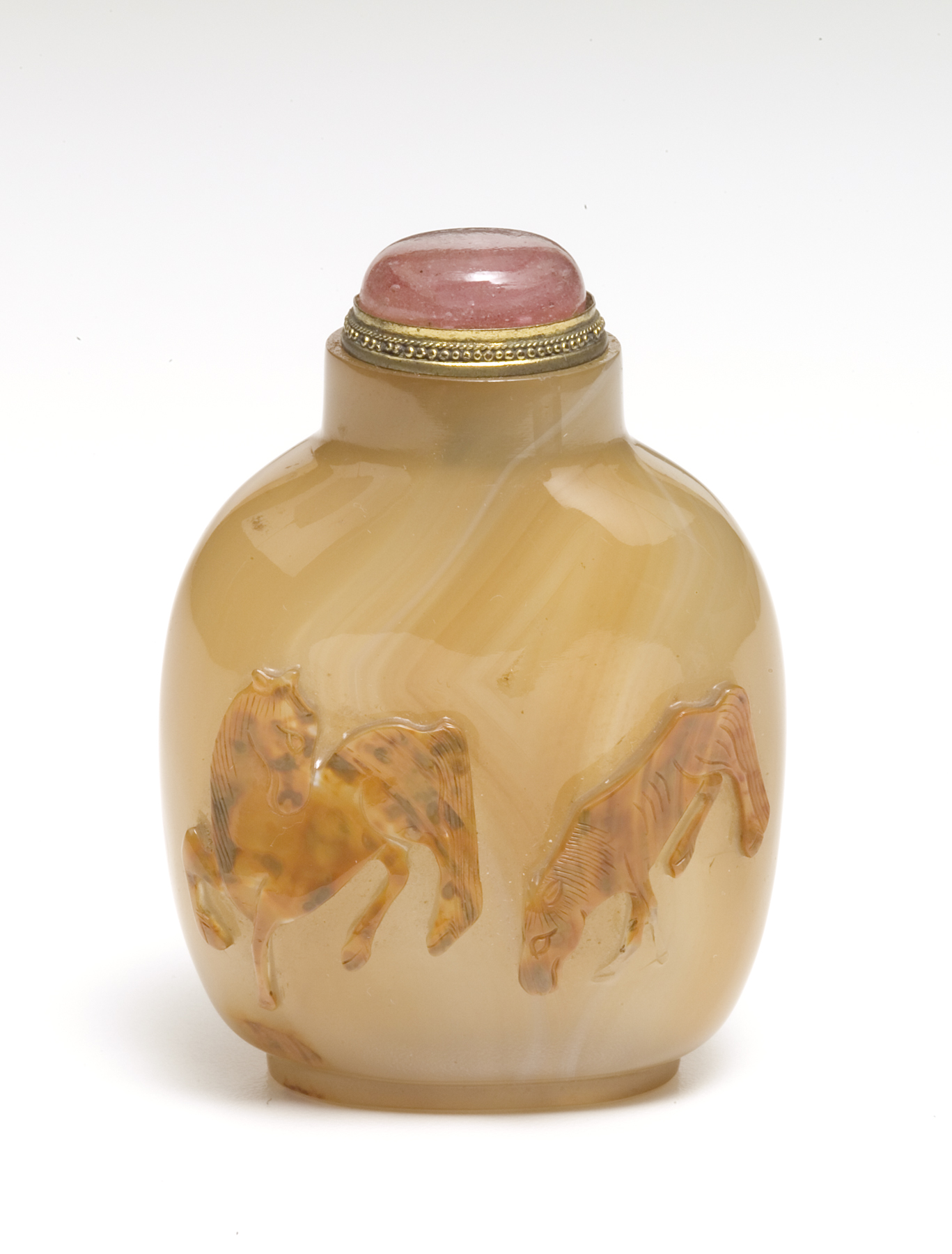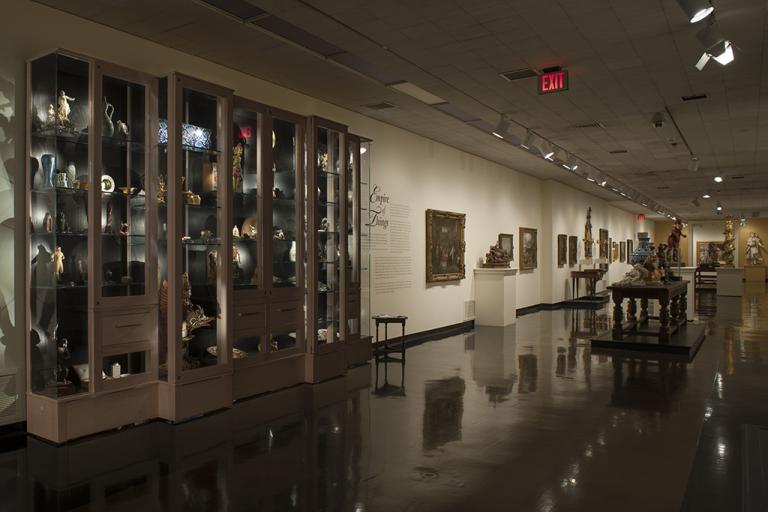horses, snuff bottle with stopper, unknown maker from China
Artwork Overview
horses, snuff bottle with stopper
, 1850–1875, Qing dynasty (1644–1911)
Where object was made: China
Material/technique: agate; chalcedony
Dimensions:
Object Height/Width (Height x Width): 6.1 x 4.3 cm
Object Height/Width (Height x Width): 2 3/8 x 1 11/16 in
Object Height/Width (Height x Width): 6.1 x 4.3 cm
Object Height/Width (Height x Width): 2 3/8 x 1 11/16 in
Credit line: William Bridges Thayer Memorial
Accession number: 1928.1867
On display: Loo Gallery
If you wish to reproduce this image, please submit an image request










